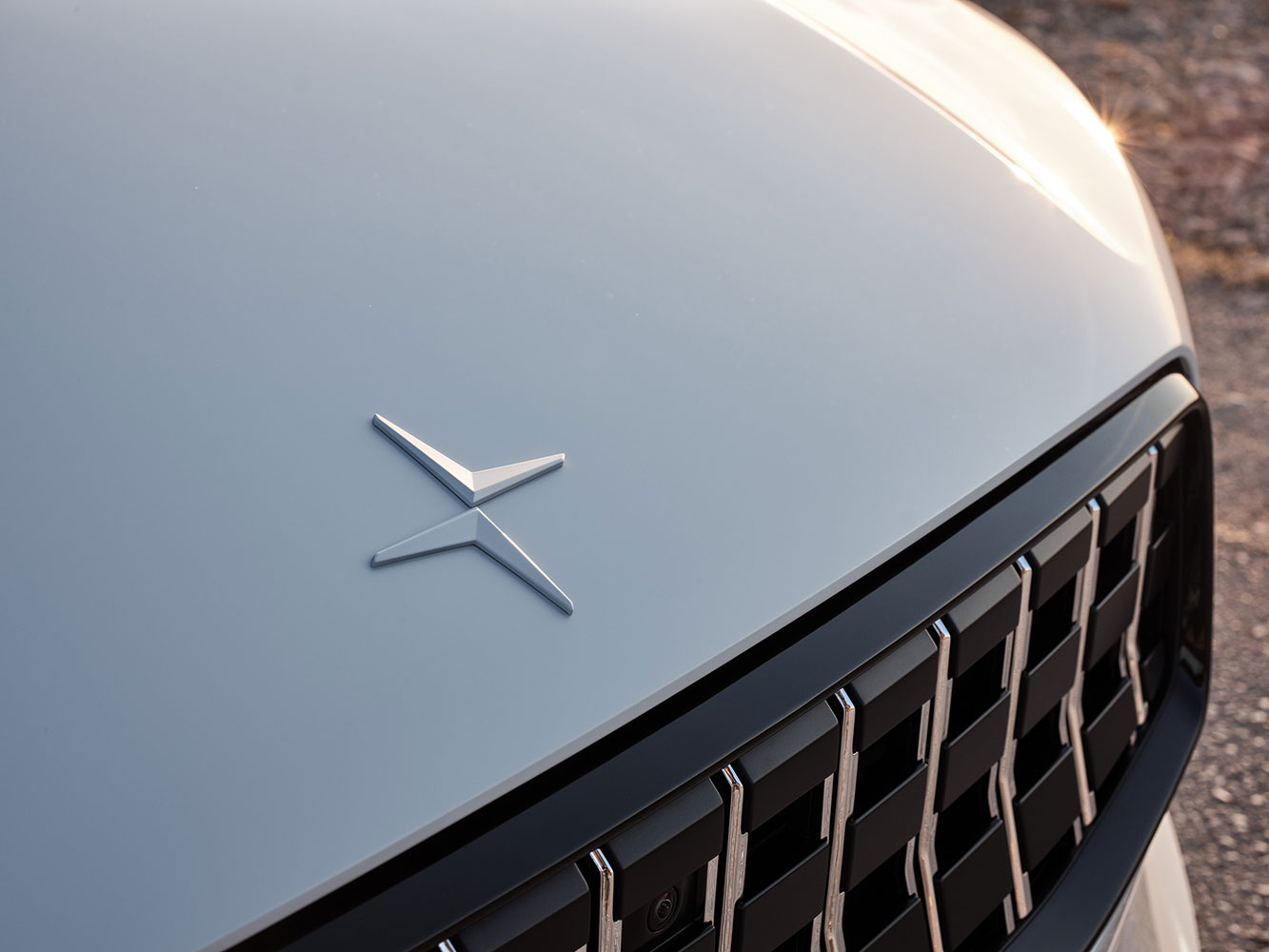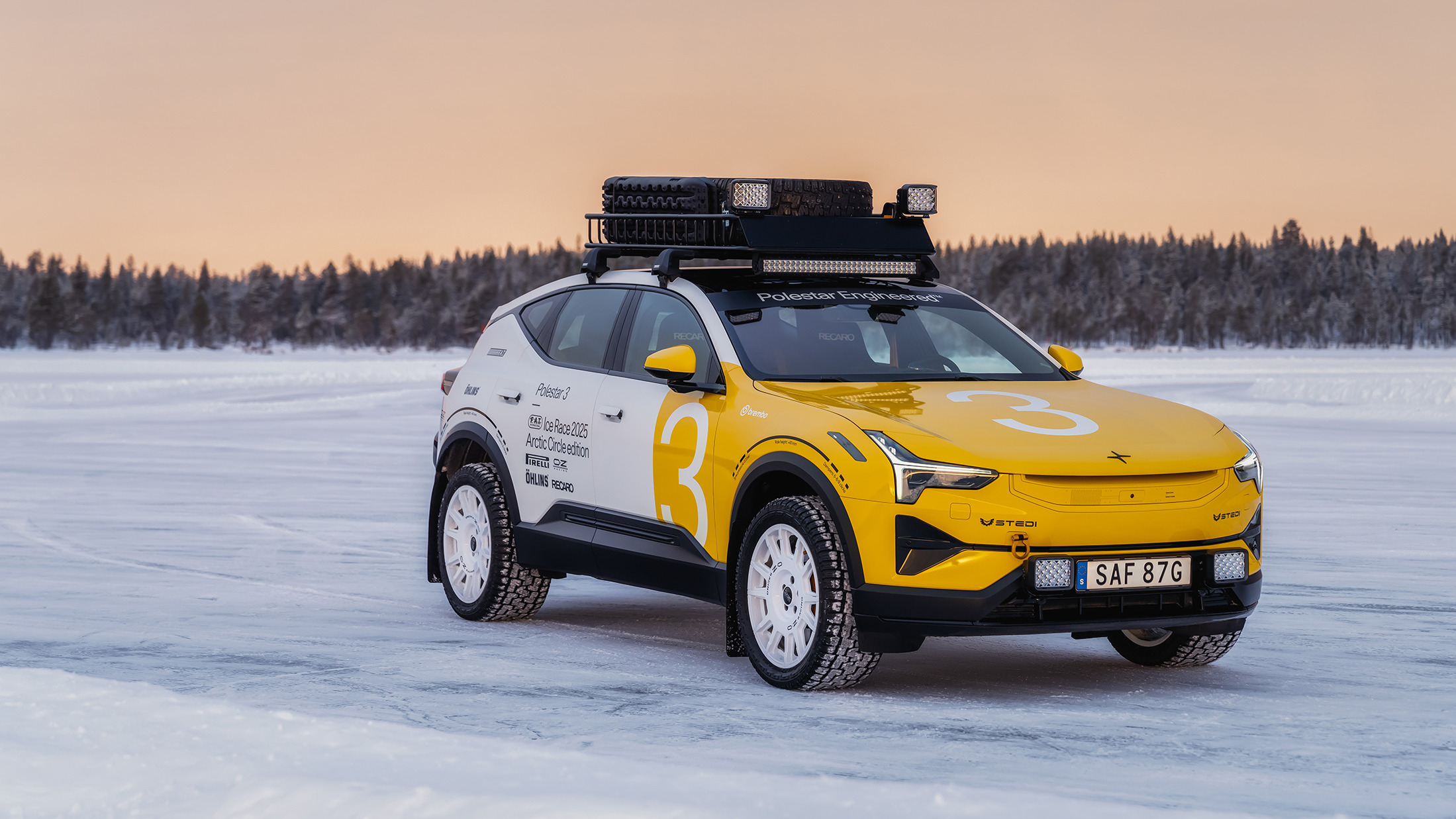Polestar 1 exemplifies the evolution of electric car design

The new Polestar 1 looks curiously modest on the road. Few would guess this is a £139,000, 600-horsepower, technology-packed performance car driven by one of the most radical hybrid systems around. This is exactly how Polestar would like to be perceived. The new electric car company from Volvo wants to do things differently – it intends to be the progressive choice, the intellectual purchase, and part of this narrative is formed by a clear and concise, and heavily directed design theme. It makes for a compelling story. But more on this later. For now, we head to the outskirts of London to test the marque’s premier car, this Polestar 1. A support vehicle follows closely, for this is a preproduction model and there is a potential something may go wrong. It doesn’t, of course, and bar an emergency break lever, this is a perfectly polished product.
The Polestar 1 positions itself as a grand touring luxury coupé, and so it has been designed and engineered for a ride in comfort, on long distances and in various scenarios. It’s a stormy day, and yet the car drives with ease on the motorway and on wet, twisty, narrow country roads. The other cars to join the Polestar family from 2020 will be fully electric. This one though gets most of its power from a traditional 2.0 litre four-cylinder petrol engine, both turbo and supercharged to deliver 308-horsepower. This drives the front wheels and is amplified by a 68bhp electric motor. Then the rear wheels are powered by a pair of electric motors to develop a further 232bhp from the 34kWh battery pack, which also allows for an electric range of 93 miles. Finally, the combined 600bhp helps the Polestar 1 sprint to 60mph in just 4 seconds.

The Polestar 1 design is an evolution of the 2013 Concept Coupé, a study car that looked back to the future and to Volvo’s classics – namely the brilliant 1960s P1800. With its simple two-doors construction and a coupé silhouette, it essentially retains a classic motor car vernacular. This is largely on purpose, as the marque doesn’t feel it needs to invent an entirely new language of design for electric mobility – rather, the approach should be subtler. It is about offering clear, functional design. This Scandinavian theme also reflects a general trend with EVs for vehicle design that is more akin to tech products.
Carbon-fibre forms much of the body reducing some of the weight and allowing for a vast, low, panoramic roof that appears to be one single structure. It works well in enhancing the car’s sporty appearance and the feeling of spaciousness inside. The tinted glass element doesn’t open but cuts out some 95 per cent of UV light. There are slender frameless side mirrors, and the carbon allows for crisp and precise sharp edges and angles enhancing the Polestar 1’s technical expression.

The interior is precisely designed, intuitive, uncluttered and comfortable – if perhaps a touch clinical. The seats are soft and hugging, and the driver elements are in logical positions. The format is 2+2 with the focus on the driver and front passenger space, and there is a clever interaction of lines and light that appears to swallow the interior volume. The cabin features leather extensively, which is perhaps a missed opportunity to explore luxury materials beyond the conventional. The Polestar 2, though, will feature vegan fabrics. This car comes with a high spec as standard to include Bowers and Wilkins stereo, and curiously against the growing trend for personalisation, customers will only be given a choice of two colours – dark grey and beige. The exterior options are also restricted to include chrome or black, wheels with three different finishes and five paint colours in gloss or matt finish.
All this is down to Thomas Ingenlath, the designer and company chief executive who is directing every single element of the Polestar brand. He is very clear that customers will not have a free reign with Polestar cars – instead his team will direct design themes. ‘For a company with such an appreciation of great design, we have to make very clear choices,’ he explained when the Polestar 1 was announced. ‘I think we take away an incredible headache for customers of being lost in the sheer amount of choice they have these days.’ Production numbers will be kept low to maintain a sense of exclusivity, with only 1,500 Polestar 1 cars planned in total at the Snøhetta-designed Chengdu facility in China. Asked who will buy this car, Ingenlath, who considers Tesla and Spotify as inspirational companies, thinks they will need to be progressive and open minded, and not tied down to heritage brands.

The exciting story here perhaps isn’t so much the car we’re driving, as what the brand represents – of how the electric car evolution has opened the gates for companies like Tesla and Byton and Polestar to compete against the big traditional players with a great advantage of no history, no baggage and less formality in how they plan products. Everything with Polestar is considered – from the sustainable production methods, to the electric drivetrain, clear functional design, and with later products, vegan interior, affordable price and shared ownership schemes.
It tells a bold story of the car as consumer technology. Talking to Ingenlath, you get the sense that it is with Polestar 2 and the cars that follow where the true story of the new company will begin.

INFORMATION
polestar.com
Wallpaper* Newsletter
Receive our daily digest of inspiration, escapism and design stories from around the world direct to your inbox.
A writer and editor based in London, Nargess contributes to various international publications on all aspects of culture. She is editorial director on Voices, a US publication on wine, and has authored a few lifestyle books, including The Life Negroni.
-
 Marylebone restaurant Nina turns up the volume on Italian dining
Marylebone restaurant Nina turns up the volume on Italian diningAt Nina, don’t expect a view of the Amalfi Coast. Do expect pasta, leopard print and industrial chic
By Sofia de la Cruz
-
 Tour the wonderful homes of ‘Casa Mexicana’, an ode to residential architecture in Mexico
Tour the wonderful homes of ‘Casa Mexicana’, an ode to residential architecture in Mexico‘Casa Mexicana’ is a new book celebrating the country’s residential architecture, highlighting its influence across the world
By Ellie Stathaki
-
 Jonathan Anderson is heading to Dior Men
Jonathan Anderson is heading to Dior MenAfter months of speculation, it has been confirmed this morning that Jonathan Anderson, who left Loewe earlier this year, is the successor to Kim Jones at Dior Men
By Jack Moss
-
 2025 Seoul Mobility Show report: all that's new and notable
2025 Seoul Mobility Show report: all that's new and notableOpened at a time of high national drama, the 2025 Seoul Mobility Show has gone on to underscore Korea’s place at the cutting edge of the auto industry. Guy Bird was there
By Guy Bird
-
 Meet the final drivable prototype of the Telo MT1 pickup truck, shaped by Fuseproject
Meet the final drivable prototype of the Telo MT1 pickup truck, shaped by FuseprojectThe Telo MT1 is a modestly scaled EV that turns the traditional all-American approach to pick-up truck design on its head
By Jonathan Bell
-
 EV start-up Halcyon transforms a classic 1970s Rolls-Royce into a smooth electric operator
EV start-up Halcyon transforms a classic 1970s Rolls-Royce into a smooth electric operatorThis 1978 Rolls-Royce Corniche is the first fruit of a new electric restomod company, the Surrey-based Halcyon
By Jonathan Bell
-
 China’s Leapmotor pounces on the European car market with its T03 city car and C10 SUV
China’s Leapmotor pounces on the European car market with its T03 city car and C10 SUVLeapmotor’s tiny electric city car could be just the tonic for cramped urban Europe. We sample the T03 and its new sibling, the fully loaded C10 SUV, to see if the company’s value proposition stacks up
By Jonathan Bell
-
 Polestar’s performance DNA is pushed to the fore by the new Arctic Circle collection
Polestar’s performance DNA is pushed to the fore by the new Arctic Circle collectionDesigned for scything across snowy race circuits, the three modified models that make up the Polestar Arctic Circle collection show the company’s sporting abilities to the full
By Jonathan Bell
-
 Wallpaper* takes the wheel of the Bentley Blower Jnr for a rich automotive experience
Wallpaper* takes the wheel of the Bentley Blower Jnr for a rich automotive experienceHedley Studios has shrunk the mighty Bentley Blower into this all-electric, road-legal barnstormer. We take it to the streets of London
By Jonathan Bell
-
 We are the world: Pininfarina’s ‘Orbis’ taps Papal support for an eco-friendly agenda
We are the world: Pininfarina’s ‘Orbis’ taps Papal support for an eco-friendly agendaThe Orbis is a ‘symbolic object’, a gift to Pope Francis from the Italian design agency at a time of political upheaval and social fracture around all aspects of sustainability
By Jonathan Bell
-
 From Polestar 1 to Polestar 6, a definitive guide to the acclaimed EV brand's cars and concepts
From Polestar 1 to Polestar 6, a definitive guide to the acclaimed EV brand's cars and conceptsNow that the new Polestar 3 and 4 are on the road, we take stock of Polestar’s progress and chronicle its evolution, cataloguing all the EV car company’s models and concepts to date
By Jonathan Bell